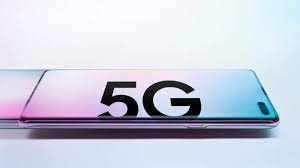
The Middle East and Africa (MEA) smartphone market posted a 3% year-on-year growth in Q2 2025, supported by seasonal promotions, rising consumer purchasing power, and improving regional economic stability, according to the latest data from Counterpoint’s Market Monitor service.
The research attributes the growth to a combination of factors, including Eid al-Adha sales and promotions, improving economic conditions, and increased consumer purchasing power supported by stronger local currencies. These dynamics helped unlock pent-up demand, prompting original equipment manufacturers (OEMs) and distributors to ramp up device availability, while many brands focused on clearing older stock ahead of the festive sales season.
Yang Wang, Senior Analyst at Counterpoint, noted that the MEA smartphone market has entered 2025 with strong recovery momentum and is now steadying. “Average selling prices (ASPs) rose 7% YoY as consumers increasingly shift toward higher-end models.
“The sector is consolidating, with smaller brands struggling to compete while leading players strengthen their positions through differentiated products, partnerships, and expanded offline presence”, Wang said.
Chinese smartphone brands dominated the MEA market, capturing a 59% share in Q2 2025, while several global players continued to perform strongly in the premium segment.
The research highlights that affordable 5G smartphones remain a major growth driver in the region, attracting both first-time buyers and upgraders. As a result, 5G adoption in MEA climbed to 37% during the quarter, fuelled by sub-$100 devices from TECNO, OPPO, and itel, especially in markets like Nigeria. The $200-$599 price segment also performed strongly, securing a 56% market share.
Among individual markets, South Africa, Egypt, and Kenya led the growth in 5G smartphone adoption. In South Africa, MTN and Vodacom’s investments boosted availability, while Egypt’s IMEI whitelisting policy and local production incentives accelerated adoption. In Kenya, the country’s mobile-first economy, driven by M-Pesa and micro-lending partnerships, continued to fuel smartphone demand.
On pricing trends, Wang added that brands are increasingly targeting both premium buyers and budget-conscious consumers. “Q2 2025 showed a clear shift in consumer demand across different price segments,” he said.
The budget segment (under $100) expanded further YoY, maintaining its dominance as the largest market share holder. This growth was supported by greater device availability, flexible financing models, and the migration from feature phones, helping the overall smartphone market remain positive in the region during the quarter.



